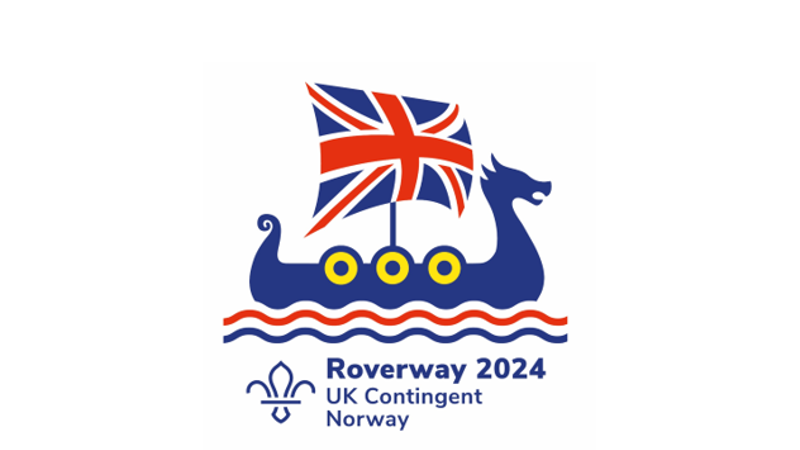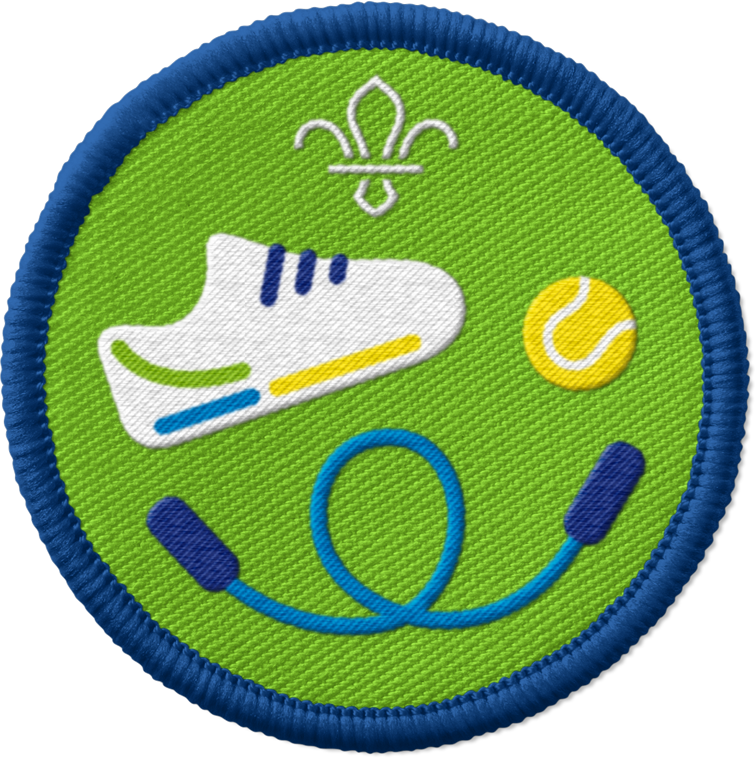
Play Stiv Heks
Før du begynner (Before you begin)
- Use the safety checklist to help you plan and risk assess your activity. Additional help to carry out your risk assessment, including examples can be found here. Don’t forget to make sure all young people and adults involved in the activity know how to take part safely.
- Make sure you’ll have enough adult helpers. You may need some parents and carers to help if you’re short on helpers.
Gjør klar denne aktiviteten (Setting up the activity)
- Find an area with plenty of space, where people can run without leaving the agreed boundaries.
- Set boundaries with your group for during the game, which you could mark out with cones or natural features, such as walls and hedges.
- Remember to check the terrain and make sure the game area is free of hazards. For example, hazards could be dips in the grass, steps, rocks or rivers if you’re playing outside.
- Find a way to identify the tagger, such as by wearing a necker.
Roverway is a European event for Scouts and Guides aged 16 to 22, which takes place every three to six years. It is a unique event due to its age range and emphasis on youth-led adventure.
The next Roverway will take place in Norway in summer 2024. The event is divided into three parts: a semi-independent expedition, a jamboree-style camp and a post-event experience. Find out more on our Roverway 2024 page.
Norway is a Scandinavian country in Northern Europe that has mountains, glaciers and big bodies of water, which are called fjords. Many Norwegians embrace the nature through outdoor activities such as kayaking, hiking and skiing. Oslo is the capital of Norway.
Forklar leken (Introducing the game)
- Explain the boundaries of the playing area and where the no-go zones are. Tell people how they can use the space respectfully, without disturbing the wildlife or other people enjoying the site if you're in a public space.
- Tell everyone where adults will be around the site and what people should do if anyone in their team needs help. This should include setting memorable spot where an adult will always stay.
- Explain the signal to stop play and how long the game will go on for. A long blast on a whistle works well as a signal to stop the game.
- If playing in a public space, young people should be paired up so no young person is left alone, and they should run or move together.
La oss leke (Let's Play)
- Tell everyone that in Norway there’s a game called Stiv Heks. It means stiff witch and is a game of tag that’s similar to ‘Scarecrow tag’, ‘Freeze tag’ or ‘Stuck in the mud’, although they often play it on skis!
- Choose a player to be ‘it’. They’ll be known as ‘the witch’. Their goal is to ‘tag’ and freeze the other players.
- Everyone else becomes a ‘runner’.
- Start the game with a countdown. The person who’s the witch stands still and counts down from 10 while the runners try to get away. When the countdown reaches 0, the game begins, and whoever’s the witch can start chasing the other players.
- If a player gets tagged, they’re frozen by the witch. They immediately must stand still with their arms and legs out wide, just like a starfish.
- Any other runner, who hasn’t been tagged, can rescue any frozen players. To rescue a frozen player, you should crawl through their legs.
- The witch wins once all the runners are ‘frozen’. You could also set a time limit for each game or round.
- When a witch wins, or when time is up, you could select someone else to be the witch and play again.
Reflection
This activity was all about having fun, working together and playing a game.
Wide games help people to practise their teamwork and problem-solving skills. This game needed everyone to work as a team, such as by people distracting ‘the witch’ to help others become unfreeze each other or run away. Did you work as a team? How did you communicate with other players? You may have told each other where ‘the witch’ was.
If you were ‘the witch’, how did you plan to tag people – did you have a strategy? Was it hard to keep track of people or monitor who was frozen?
This game was also about problem-solving. What was the trickiest part of the game? People might think about having to know when to it was safe to unfreeze people. Did people have to think ahead when they were deciding what to do?
In Norway, this game might have been played on skis on ice. Do you think this would have made the game harder or easier?
Safety
All activities must be safely managed. You must complete a thorough risk assessment and take appropriate steps to reduce risk. Use the safety checklist to help you plan and risk assess your activity. Always get approval for the activity, and have suitable supervision and an InTouch process.
- Contact games and activities
Make sure everyone understands what contact is acceptable, and monitor contact throughout the activity.
- Dark
Provide some light, so the environment isn’t completely dark. Everyone must be able to see others and move around the area safely.
- Active games
The game area should be free of hazards. Explain the rules of the game clearly and have a clear way to communicate that the game must stop when needed. Take a look at our guidance on running active games safely.
- To make the game easier, you could have more people play the role of the ‘witches’.
- To make the game harder, you could play over a wider area.
- You could have a practice round to make sure everyone knows the rules.
- If anyone may struggle to catch other players, you could have a walking version of the game.
- If people may struggle to go underneath each other’s legs, or may feel uncomfortable doing this, players could go under each other’s arms instead or simply tag each other to free them.
- Remember to check the terrain and space is suitable for everyone to use.
- If someone doesn’t want to play the game, they could help to referee the game or be the timekeeper.
All Scout activities should be inclusive and accessible.
Why not try some of our other international inspired games, such as International pictionary.
You could let young people vote to choose who will be on, or once they have reflected, they could create their own version of the game. What would they change about this game to make it better? How could it be more creative? What would you do to make this game easier, harder, more challenging or more fun?

